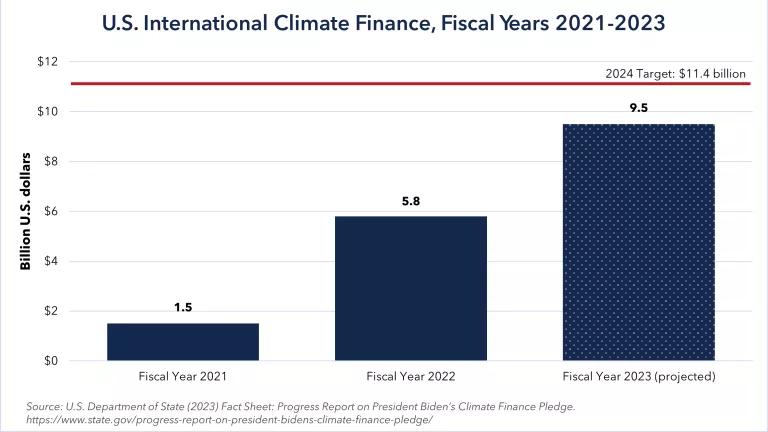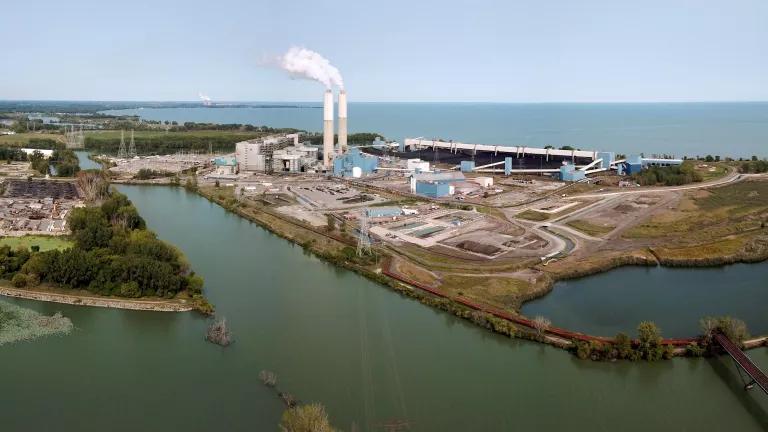As I meet with global warming officials from other countries, I frequently hear this statement: “American action on global warming is lost for the foreseeable future.” This is a good time to evaluate how true or false this statement is since the US Energy Information Administration (EIA) has just released its annual projections – the Annual Energy Outlook 2011. The general conclusion: emissions will be below 2005 levels for the next 15 years and could be reduced even further if the Administration implemented EPA and other rules in a strong fashion.
But before giving some detail on the results here is a little perspective on the EIA’s analytical track record. First, EIA’s projections of energy use and emissions have been reduced each time a new analysis is released since their earlier projections had overestimated the growth in emissions (as my colleague highlighted). This isn’t because they are bad analysts. It is just hard to predict future energy use in an ever changing world and they don’t want to be perceived as radicals (so their analysis tends to be conservative). [Note: the same could also be said of the International Energy Agency.] Second, EIA projections are based on the “policies on the books”. Their “reference case” analysis “generally assumes that current laws and regulations affecting the energy sector remain unchanged throughout the projection.” So their reference case doesn’t include policies that are under consideration and that might be adopted by the President, Congress, or the states. Nor does this scenario consider new rules that might be implemented under existing law. Lastly, predicting future changes in technology development and costs is a complicated undertaking so EIA uses assumptions about how technology will change in the future. Remember how you first used your email or the internet? Think you could predict 5, 10, or 20 years later that you could access it from your pocket and tell your friends what you were doing every second from that same device? Similarly, capturing how energy technology will change in the future is difficult. To capture all these dynamics, EIA includes “sensitivity analysis” which looks at the emissions and energy results from changes to these factors – e.g., new policies being implemented.
With that in mind let’s look at some of the results from the new EIA projections.
Without any new policies, US energy-related CO2 emissions* will be below 2005 levels for the next 15 years. In 2020, US emissions without new policies are projected to be 4% below 2005 levels and won’t surpass 2005 levels until 2027, according to EIA’s reference scenario (see figure). This reflects the adoption of no new policies, but does include recent existing policies such as the renewable and energy efficiency investments in the stimulus, the CO2 tailpipe and fuel economy standards for cars and light trucks through 2016 adopted by President Obama in early 2010, new appliance efficiency standards recently put into effect (see here, here, here, and here), state-level greenhouse gas programs such as the ones in California and the Northeast, state-level requirements that a certain portion of electricity is produced from renewable sources. The scenario also includes increased use of natural gas in the electricity sector mostly as a result of tapping into shale gas, growing use of renewable technologies and fuels (partly as a result of the stimulus investments and the state level policies), and other general economic trends.

Implementation of additional policies under development would reduce emissions further. The extension of existing policies (some technically expire at a certain date) combined with updating existing regulations as the current law requires would lead to further emissions reductions. In the EIA’s “extended policies” scenario US energy-related CO2 emissions would be 5% below 2005 levels in 2020 and not rise above 2005 levels for the whole period that was analyzed – through 2035 (see figure). This scenario includes: new vehicle standards for cars and light duty trucks for model years 2017-2025 (although EIA analyzed light-duty vehicle standards reaching 46 mpg in 2025, not the 60 mpg standard that is feasible and under consideration), the first-ever carbon pollution and fuel economy standards for medium and heavy trucks, updated appliance efficiency standards, and additional energy efficiency standards for a wider variety of appliances (such as those agreed here and here).
EIA forecasts that essentially no new coal-fired power plants will be built even without additional policies. In both the “reference” and “extended policy” cases, essentially no new coal-fired powered plants are built through 2035. Without new policies overall coal capacity is expected to be lower in 2035 than it was in 2010.
Greenhouse gas performance standards for power plants and other big industries, as well as other air quality regulations required by law could also affect greenhouse gas emissions trends. In considering the “extended policies” scenario, EIA didn’t include the greenhouse gas standards for America’s biggest carbon polluters as required under the existing Clean Air Act or the air quality rules that the Administration is legally required to adopt (see for example here and here). These could have impacts on the investment decisions of many companies and thus emissions. The specifications of these rules are currently under development so their exact impact on emissions isn’t known at this time. But stay tuned.
Emissions could be significantly lowered if the Administration implemented EPA and other rules in a strong fashion. While US emissions are expected to be on a downward trajectory without new rules, emissions could be lowered even further if the new rules for power plants, vehicles, and other big emitters are effectively implemented.
-------------------------------
* Energy-related CO2 emissions account for over 80% of US economy-wide emissions, so this analysis doesn’t fully capture trends in economy-wide US emissions. However the other sources of emissions have generally been declining –by 3% for the period 2000-2009. In addition, U.S. forests, agricultural lands, etc have been a net “sink” – they have sequestered more emissions than they emitted. For example, in 2009 these categories sequestered 1,015 MMTCO2 – equivalent to 18% of US emissions.




